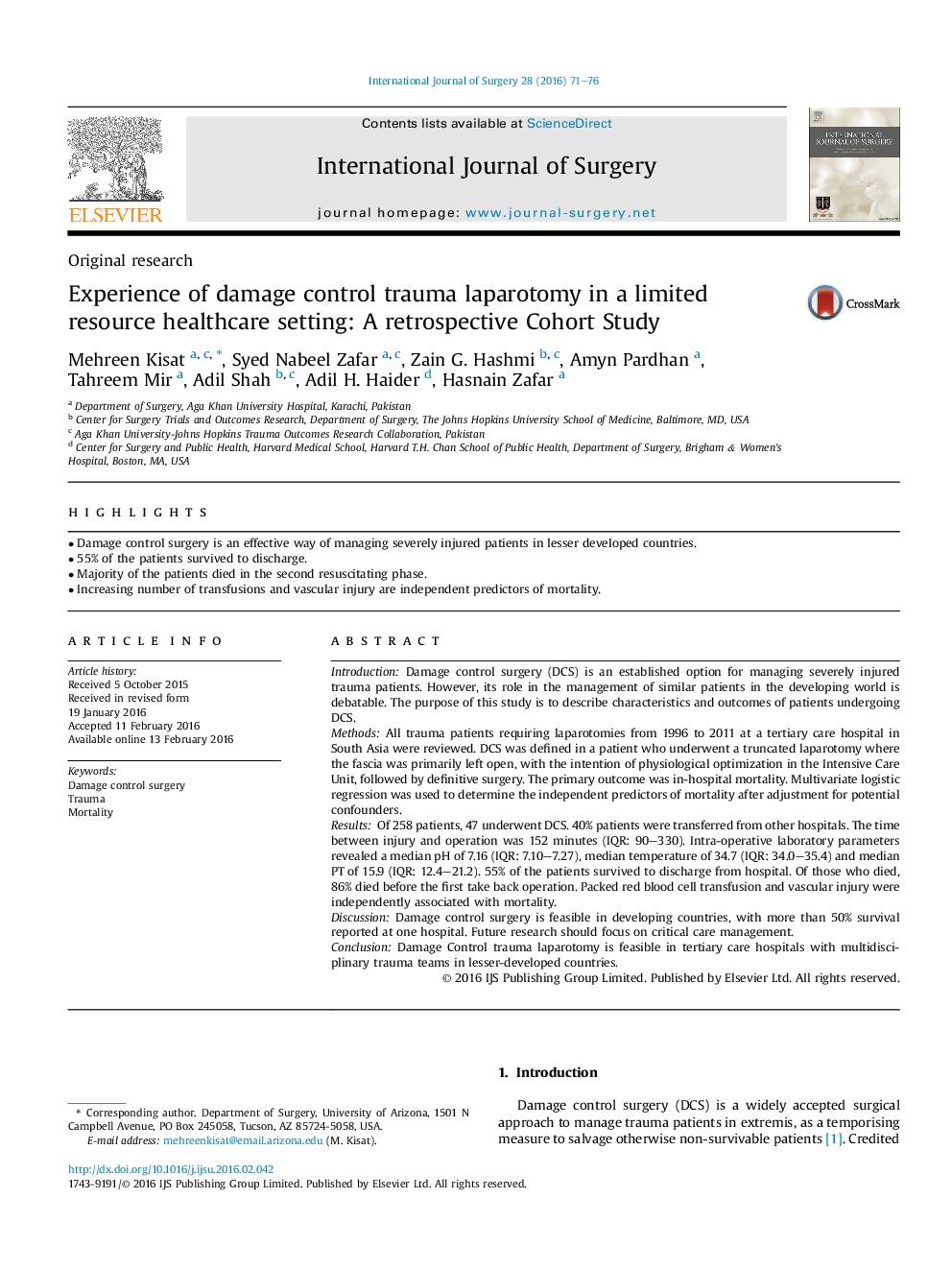| Article ID | Journal | Published Year | Pages | File Type |
|---|---|---|---|---|
| 4285463 | International Journal of Surgery | 2016 | 6 Pages |
•Damage control surgery is an effective way of managing severely injured patients in lesser developed countries.•55% of the patients survived to discharge.•Majority of the patients died in the second resuscitating phase.•Increasing number of transfusions and vascular injury are independent predictors of mortality.
IntroductionDamage control surgery (DCS) is an established option for managing severely injured trauma patients. However, its role in the management of similar patients in the developing world is debatable. The purpose of this study is to describe characteristics and outcomes of patients undergoing DCS.MethodsAll trauma patients requiring laparotomies from 1996 to 2011 at a tertiary care hospital in South Asia were reviewed. DCS was defined in a patient who underwent a truncated laparotomy where the fascia was primarily left open, with the intention of physiological optimization in the Intensive Care Unit, followed by definitive surgery. The primary outcome was in-hospital mortality. Multivariate logistic regression was used to determine the independent predictors of mortality after adjustment for potential confounders.ResultsOf 258 patients, 47 underwent DCS. 40% patients were transferred from other hospitals. The time between injury and operation was 152 minutes (IQR: 90–330). Intra-operative laboratory parameters revealed a median pH of 7.16 (IQR: 7.10–7.27), median temperature of 34.7 (IQR: 34.0–35.4) and median PT of 15.9 (IQR: 12.4–21.2). 55% of the patients survived to discharge from hospital. Of those who died, 86% died before the first take back operation. Packed red blood cell transfusion and vascular injury were independently associated with mortality.DiscussionDamage control surgery is feasible in developing countries, with more than 50% survival reported at one hospital. Future research should focus on critical care management.ConclusionDamage Control trauma laparotomy is feasible in tertiary care hospitals with multidisciplinary trauma teams in lesser-developed countries.
